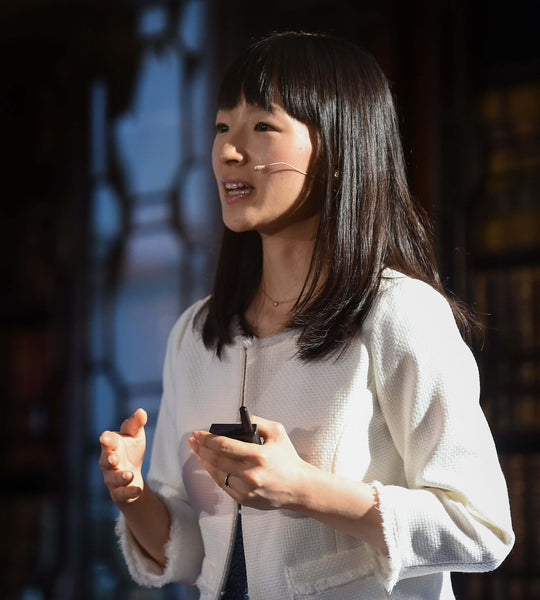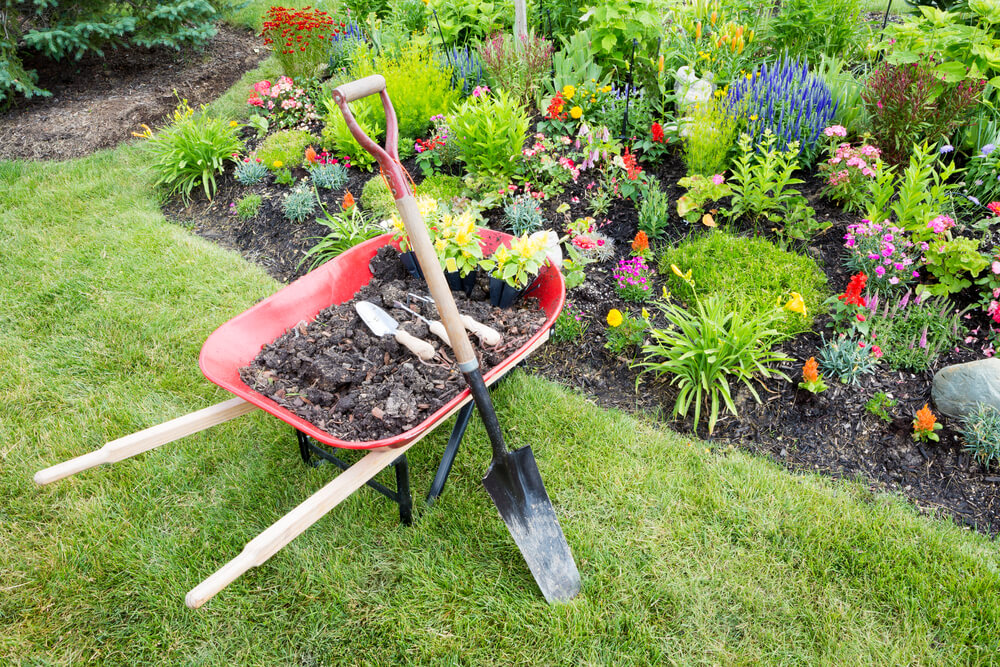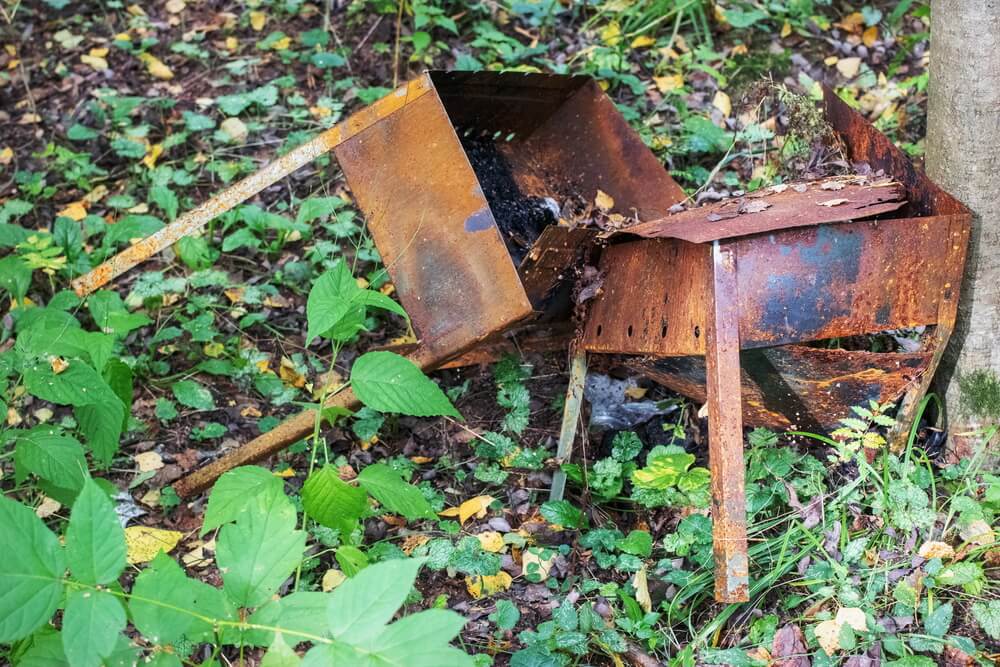If you have been spending 90% of your time indoors like the majority of Americans, you probably haven’t heard that “spending time outdoors seems to have discernible benefits for physical and mental health.”
Many people spend most of their time indoors because their outdoors is not appealing enough.
If you face this challenge, read through to the end and learn how to Marie Kondo your favorite outdoor spaces.
This article focuses on an organizing method known as the KonMari Method. We start by providing a background of the Japanese TV host, organizing consultant, and author behind the method.
Her name is Marie Kondo. The article will then focus on how you can follow her six organizing rules to create the outdoors you want to spend most of your time in.
Even though the KonMari Method covers both indoors and outdoors, we only focus on the outdoors in this article.
Who Is Marie Kondo?

(Photo: Marie Kondo)
On her website, KonMari.com, Marie Kondo describes herself as “a tidying expert, bestselling author, star of Netflix's hit show, ‘Tidying Up With Marie Kondo,’ and founder of KonMari Media, Inc.”
Marie Kondo says that she has always been enchanted with organizing since she was young.
This interest saw her establishing a tidying consultancy at 19 while still a university student in Tokyo.
From these humble beginnings, Marie Kondo would later become so influential that Time Magazine named her as one of the 100 Most Influential People in the World in 2015.
The Method
The KonMari Method has become extremely famous because it differs from most tidying methods that advocate for a slow approach that moves from space to space.
Instead, the method “encourages tidying by category — not by location.”
Another factor that makes the KonMari Method unique is that the focus of tidying is not what you need to eliminate but rather what you want to keep.
Central to the process is the question: “Does this spark joy?”
Marie Kondo says that “People around the world have been drawn to [her] philosophy not only due to its effectiveness but also because it places great importance on being mindful, introspective and forward-looking.”
Even though many people mistakenly believe that the KonMari Method advocates for minimalism, Marie Kondo corrects this view: “KonMari is not minimalism.”
She adds, “Minimalism advocates living with less; the KonMari Method encourages living among items you truly cherish.”
Now that we know who Marie Kondo is and the basics of her organizing method, let’s get organized and see how you can use the method to turn your outdoors into spaces you want to spend much time in.
We follow her six basic rules of tidying.
Commit Yourself To Organize All At Once

Instead of looking at decluttering or transforming your favorite outdoor spaces as something to be done over an extended time moving from one space to the next, the KonMari Method stipulates that you go all out once you have decided to tidy your space.
In practice, committing yourself to organize all at once means that you start by deciding that it’s time to turn your garden or backyard into the version you want.
This commitment is realized by setting aside the time, money, and labor you will need to transform the space.
The challenge with methods that advocate for a slow approach where you tidy a small part at a time is that there is a risk that you will never finish.
Organizing the whole area at one time is an indication that you understand that your spaces are linked and that it’s not possible to experience the joy of one organized space if the others are still disorganized.
Write Down The Ideal Version Of Your Outdoor Space

The KonMari Method is based on the realization that the “tidying process is not about decluttering your house or making it look neat on the spur of the moment for visitors.”
Instead, “It’s about tidying up in a way that will spark joy in your life and change it forever.”
Once you have decided that you want to turn your favorite outdoor spaces into the version you want, take out your pen and paper or notepad on your phone. Wherever you go, you will see inspiration.
However, you will not remember everything. So snap away and take notes that will assist you in creating the best outdoor setting you can imagine.
The advantage of writing down what you want your ideal garden or backyard to look like is that it gives you an idea of what fits into the picture you have created and what doesn’t.
Whatever you write, be as clear as possible. Indicate how you will evaluate the work done to see if you have met your goals at the end.
If you have no idea what to write, look at the spaces that inspire you, whether in magazines, TV shows, or neighbors’ gardens.
Write or take images of what you like about those spaces. Have a rudimentary sketch or a vision board of what you want the space to look like once you are done.
Does Visualization Work?
Some scientific studies support the idea that visualization can help you attain your goals. A study published by the National Library of Medicine concludes that athletes who used visualization had almost the same improvements as those involved in physical training. The researchers say, “We conclude that the mental training employed by this study enhances the cortical output signal, which drives the muscles to a higher activation level and increases strength.”
Discard First

Even though the KonMari Method doesn’t mainly focus on what you want to eliminate, it sees elimination as an important process from which we should draw lessons.
This is why the discard first rule is premised on the idea of focusing on what you want to keep by looking at the items in your outdoor space and asking yourself if each of the items still sparks joy or brings you happiness.
The discarding process involves thinking deeply about the items in your outdoor space and asking yourself if you still need them.
The KonMari Method is based on the belief that introspection helps you decide what you don’t need to bring into your life in the future.
There is a difference between eliminating items and storing them.
When you take all the things you are not using and find somewhere to store them, you have simply stored your clutter.
Getting rid of stuff means getting it out of your life for good. You could sell some of it, give it to those who need it, or send it away with waste removal.
From a practical point of view, discarding the things you don’t need from your outdoor spaces first helps you understand the amount of space you have left.
This knowledge makes it easier to organize what you are left with and what you really need.
Organize By Category, Not By Space
The KonMari Method advises that you should organize your spaces by category and not by location.
But what does this mean in reality? It means that you should start by categorizing the items in your outdoor space.
Examples of categories include garden tools, outdoor furniture, plants, decorations, and the like.
The reasoning behind tidying by category and not by location is that there may be similar items in more than one place.
Therefore, when you tidy your outdoors based on location, you will most likely end up doing the same job many times in different locations.
Organizing by category means that you will start by piling all the similar items in your garden or backyard together.
From this pile, select the items you want to keep and let the rest go. It’s important at this point to remember that you are not storing anything with the hope that you may need it one day; you are either keeping an item because it is still useful or you are getting rid of it.
Once you have decided what you will keep, consider how you will lay it out in a way that sparks joy.
This means that everything should be placed where it belongs. Doing so makes it easier to keep things tidy going forward.
Follow The Right Order
Tidying your favorite outdoor spaces can be a considerable challenge, mainly when dealing with sentimental items.
This is the reason Marie Kondo advises that you start with the simple stuff, like those flower pots that haven’t been used in years or the tools that you needed when you lived in a different environment.
The “follow the right order” rule is premised on the understanding that “As you move through each category, your energy and enthusiasm increases; you may be physically tired, but getting rid of unnecessary clutter acts as an invigorating pick-me-up.”
Starting with stuff that you are not too emotionally attached to provides you with a chance to hone your skills in the KonMari Method.
When you get to the sentimental stuff like that bench you bought with your first salary when you were 19, you are starting to understand the difference that your organizing attempts are making.
Focusing on sentimental stuff, in the beginning, will distract your attention.
Begin organizing your space by removing all the rubbish, containers that are no longer useful, and packaging you forgot to get rid of.
Move to other items that may seem intact, but you no longer use. This could include garden tools or furniture.
Find plants that no longer spark joy or those you never got a chance to plant. And finally, you could end with the sentimental items you were placing aside as you were tidying.
Does It Spark Joy?

You are making an effort to organize your favorite outdoor spaces because you want to find joy when using them.
The KonMari Method is based on the conviction that “Only you can know what kind of environment makes you happy.”
Therefore, you need to ask a simple question when you look at every item in your outdoor space: Does it spark joy? If the answer is yes, you keep the item.
Answering the above question can, however, be challenging when you are dealing with sentimental stuff.
It may not always be easy to be objective when dealing with such items because getting rid of them may feel like a betrayal to those that gave them to you, to the memories they trigger, or the service that the items have given you.
The KonMari Method has an answer to the challenge of providing an objective answer when dealing with sentimental items: “your feelings are the standard for decision making — specifically, knowing what sparks joy.”
The method advises that when you pick up an item and ask whether it still sparks joy, “Pay attention to how your body responds.”
If the item brings inspiration and still excites you, take it as a cue that you still need it.
Be Thankful
Getting rid of stuff that doesn’t spark joy is not easy. It may come with feelings of guilt.
This is the reason Marie Kondo says, “Cherish the items that bring you joy, and let go of the rest with gratitude.” For her, “It’s about choosing joy.”
The idea of gratitude is supported by Dr. Yuko Hanakawa, a licensed New York City clinical psychologist.
She is quoted by HuffPost.com saying, “By treating your items with respect, kindness and gratitude, you are enhancing the spirit of the given item. ...
From that perspective, by saying ‘thank you,’ you are respecting the spirit of the items that you’re letting go of with gratitude, instead of getting rid of them with negativity or force.”
While the KonMari Method is appealing to those who have decided to declutter and organize their lives, it’s vital to note the importance of maintaining the order you have created so that you never have to declutter in the first place.
Suppose the disorder you see around yourself emanates from psychological conditions like a hoarding disorder or depression.
In that case, you may need to seek professional help.

